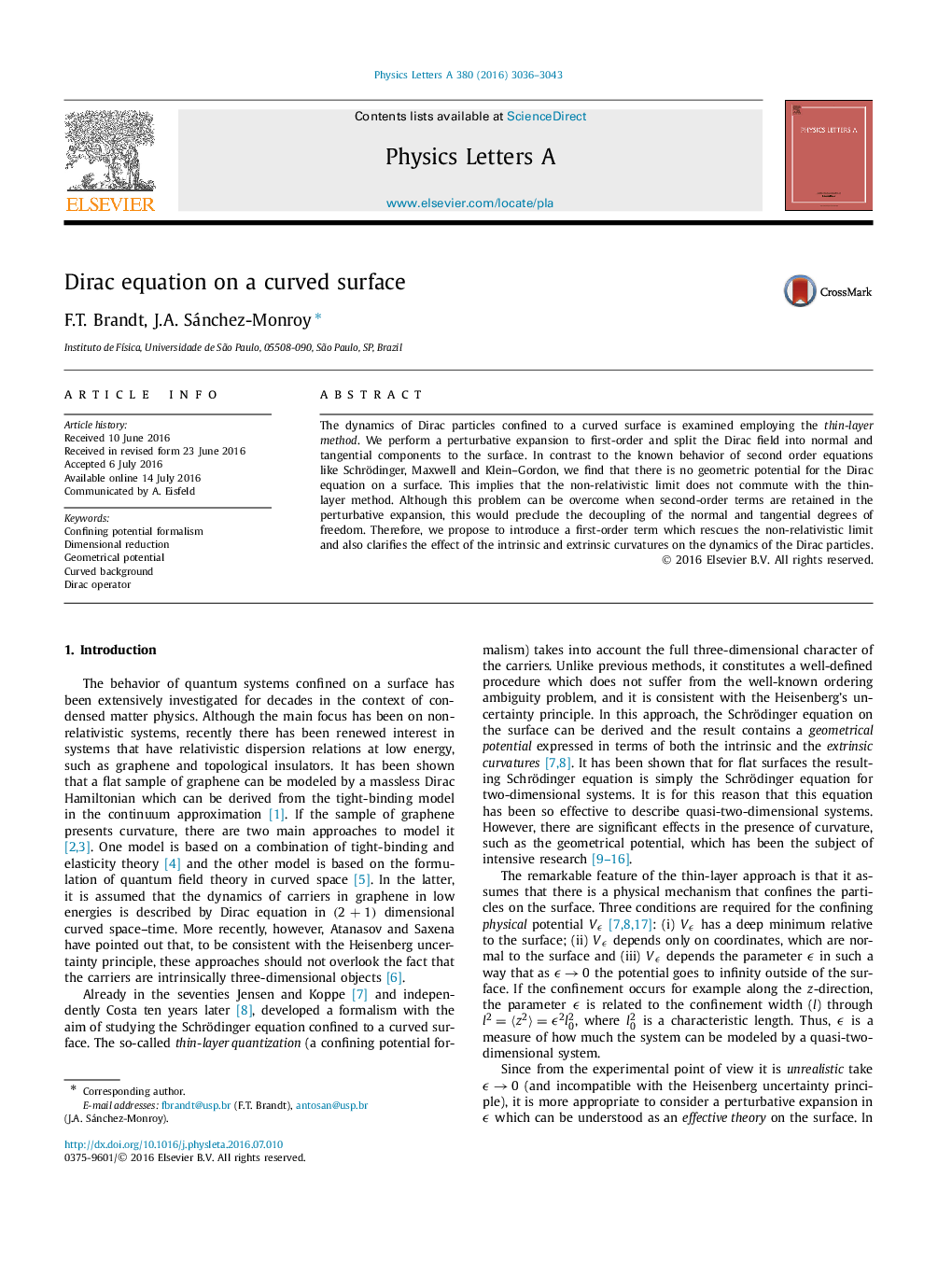| Article ID | Journal | Published Year | Pages | File Type |
|---|---|---|---|---|
| 1866661 | Physics Letters A | 2016 | 8 Pages |
•The thin-layer method is employed to derive the Dirac equation on a curved surface.•A geometric potential is absent at least to first-order in the perturbative expansion.•The effects of the extrinsic curvature are included to rescue the non-relativistic limit.•The resulting Dirac equation is consistent with the Heisenberg uncertainty principle.
The dynamics of Dirac particles confined to a curved surface is examined employing the thin-layer method. We perform a perturbative expansion to first-order and split the Dirac field into normal and tangential components to the surface. In contrast to the known behavior of second order equations like Schrödinger, Maxwell and Klein–Gordon, we find that there is no geometric potential for the Dirac equation on a surface. This implies that the non-relativistic limit does not commute with the thin-layer method. Although this problem can be overcome when second-order terms are retained in the perturbative expansion, this would preclude the decoupling of the normal and tangential degrees of freedom. Therefore, we propose to introduce a first-order term which rescues the non-relativistic limit and also clarifies the effect of the intrinsic and extrinsic curvatures on the dynamics of the Dirac particles.
